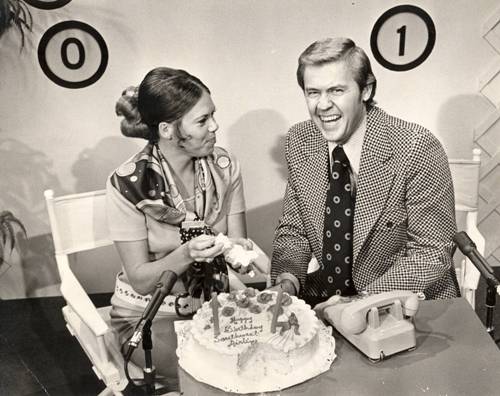- Subscribe to RSS Feed
- Mark as New
- Mark as Read
- Bookmark
- Subscribe
- Printer Friendly Page
- Report Inappropriate Content
Before the satellite era, local television stations offered viewers a large selection of daytime programs. Some of these programs became a part of national franchises like Bozo the Clown. This show began in Chicago, but you could find a local Bozo in a lot of different markets. Other local programming included dance shows (American Bandstand began as a local Philadelphia show), quiz shows, and children’s shows. In our early years, local programming was an ideal platform for Southwest because the television stations needed guests, and we needed the free exposure.

One of the big franchise shows was Dialing for Dollars. Local hosts would show a movie, and during the breaks, they would call someone at random from strips of telephone numbers cut from phone books. Hopefully, the “dialee” was watching the show because the host would ask the person for the “count” and the “amount.” The count referred to how far from the top or bottom of the slip the telephone number was. For example, if the number was nine from the top, the count would be nine. The amount would be the dollar prize. If no one guessed correctly, $10 was added to the prize for the next drawing, and pots could get up to $2,000 or so. The premise was genius because you had to watch the show in order to win money. In the view above, Flight Attendant Judy Seely visits the host of Houston’s Dialing for Dollars on KTRK, Bob Hilton, to celebrate our second birthday in June 1973. (Bob seems to be having too much fun, and check out his jacket.) Southwest was participating in a month-long birthday contest where we gave away a weekend trip for two to San Antonio. On his desk next to the cake is Bob’s trusty rotary dial phone that was used to call the next contestant. Since anyone with a phone in his or her name could receive the call, the conversations could be interesting.

We returned to KTRK’s Dialing for Dollars a few years later. Evidently the show had musical guests from time to time because Flight Attendants Vicki Kline and Mary Skwarlo are sharing candy with singer Pat Hamilton during a Valentine’s visit to the show. This time, the Southwest prize was a weekend trip to Dallas.

And then there were the children’s shows. Once again, KTRK in Houston seemed to have an affinity for Southwest guests. In the March 2, 2012, Flashback Fridays post, I showed a photo of Flight Attendant Sally Glenn with a robot on the set of the Cadet Don Show. First Officer Sam Cohn (above) also made that trip to the Houston show, in 1971 or early 1972. It looks like Cadet Don (kind of like Darrin on Bewitched, two actors played Cadet Don) is receiving some orders from “headquarters command,” and from the look on Sam’s face, it involves the Southwest 737 model on the desk. (Note that the model carries the original markings with the word “AIRLINE.”) The television monitor behind the guys is right out of the 60s, and I have no idea where the robot was.

Finally, we close with a longtime Dallas television tradition, Peppermint Place. The late Jerry Haynes was featured as Mr. Peppermint, and his sidekick was Muffin. With a thick Texas accent and “mumbly” voice, Muffin often got away with saying things that Mr. Peppermint never could. For a segment about a child’s first flight, Dallas Ticket Agent Beverly Leflett represented Southwest. There isn’t a date on the photo, but I am guessing perhaps it is from the late 70s or early 80s. Muffin is trying to eat a boarding pass to Houston, and this is the first photo I have seen of this style of boarding pass where the top part is perforated and torn off as the Customer boards the airplane.
Like the hot pants era, the era of the locally produced entertainment shows is over. While these shows didn’t directly reach Southwest’s primary market demographic back then, the business traveler, they did allow us to reach his family in a personal and inexpensive manner. I have to think the accessibility we showed by participating in these local shows helped us demonstrate how different we were from the “stuffy” other guys.
You must be a registered user to add a comment. If you've already registered, sign in. Otherwise, register and sign in.